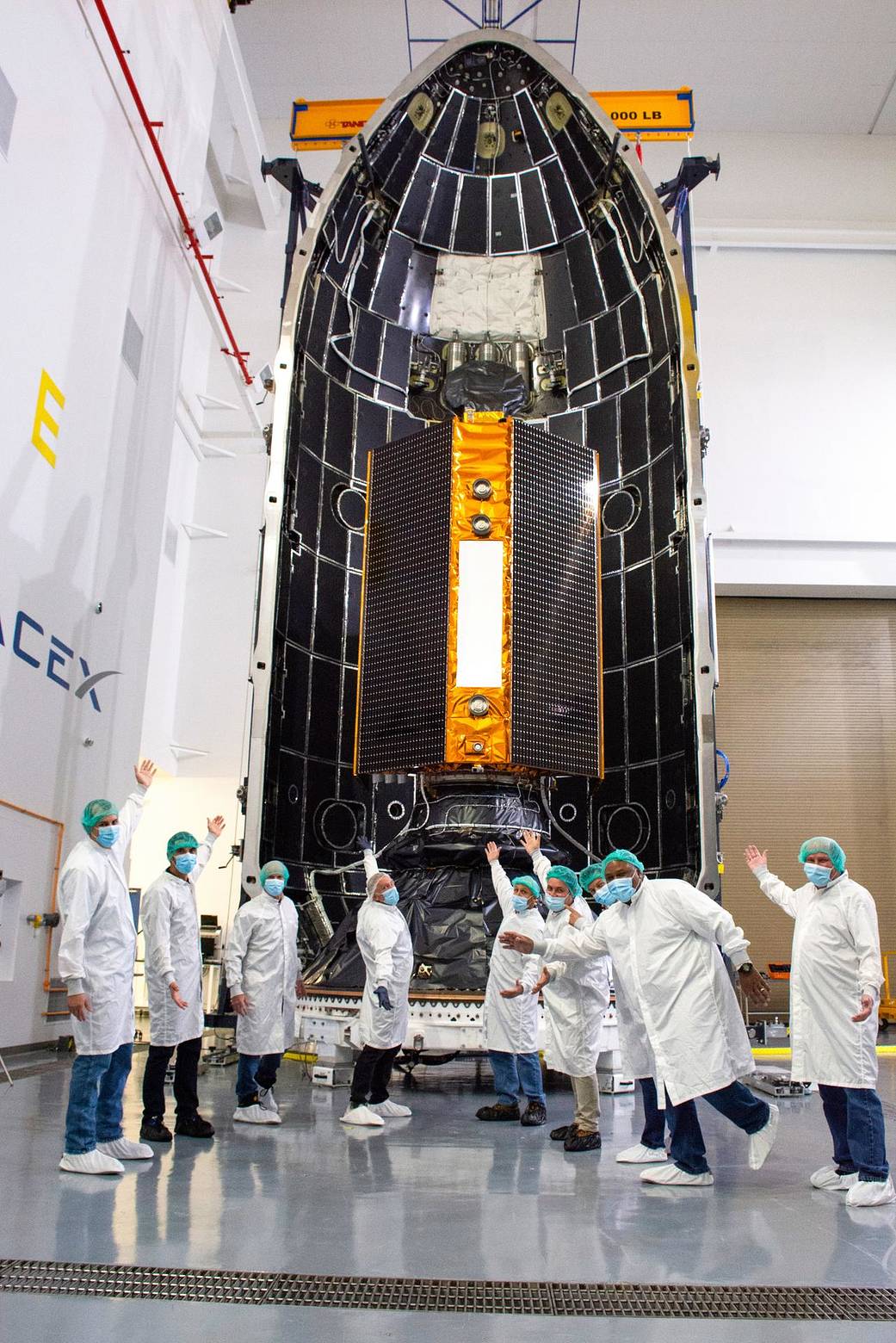Inside SpaceX’s Payload Processing Facility at Vandenberg Air Force Base in California, the U.S.-European Sentinel-6 Michael Freilich ocean-monitoring satellite is being encapsulated in its payload fairing on Nov. 3, 2020. Sentinel-6 is scheduled to launch on Nov. 21, 2020, at 12:17 p.m. EST, atop the SpaceX Falcon 9 rocket from Space Launch Complex 4E at Vandenberg Air Force Base.
A U.S.-European partnership, the Sentinel-6 Michael Freilich spacecraft will begin a five-and-a-half-year prime mission to collect the most accurate data yet on global sea level and how our oceans are rising in response to climate change. The mission will also collect precise data of atmospheric temperature and humidity that will help improve weather forecasts and climate models.
The spacecraft is named after Dr. Michael Freilich, the former director of NASA’s Earth Science Division and a tireless advocate for advancing satellite measurements of the ocean. Sentinel-6 Michael Freilich builds on the heritage of the European Space Agency’s Copernicus Sentinel-3 mission as well as the heritage and legacy of the U.S.-French TOPEX/Poseidon and Jason-1, 2, and 3 series of sea level observation satellites. Launched in 2016, Jason-3 is currently providing data initiated with the observations of TOPEX/Poseidon in 1992.
The data from these satellites has become the gold standard for sea level studies from space over the past 30 years. In 2025, Sentinel-6 Michael Freilich’s twin, Sentinel-6B, is scheduled to launch and advance these measurements for at least another half decade.
Image Credit: NASA/Randy Beaudoin





























